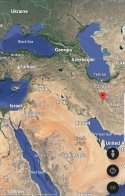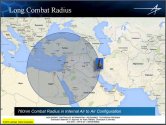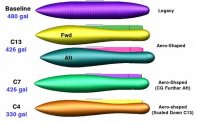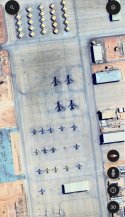This has literally never happened. The ones being flown to Israeli Hospitals were Jabhat Al Nusra fighters, that is the Alqaeda branch in Syria. Hamas had nothing to do with them. The only Palestinian faction that fought briefly in the Syrian war before going neutral was the Islamic Jihad movement and they fought on the side of the SAA.Hamas was fighting on the side of the "moderate rebels" and its fighters were regularly flown to Israeli hospitals for treatment.
You are using an out of date browser. It may not display this or other websites correctly.
You should upgrade or use an alternative browser.
You should upgrade or use an alternative browser.
Israeli-Palestinian Conflict and other Related Conflicts in the Middle East (read the rules in the first post)
- Thread starter phrozenflame
- Start date
"The Palestinian Islamist group Hamas has decided to restore ties with Syria, 10 years after its leadership shunned Damascus over opposition to President Bashar al-Assad's crackdown on a revolt against his rule, two sources within the group told Reuters.
...
Hamas leaders had publicly endorsed the revolt aimed at overthrowing Assad's dynastic rule, and left their Damascus headquarters."
...
Hamas leaders had publicly endorsed the revolt aimed at overthrowing Assad's dynastic rule, and left their Damascus headquarters."
Last edited:
Israel has done it multiple times in the past, as far as in Tehran and Isfahan.And how would they do this exactly? When they attacked Iraq they went over Jordanian airspace and they needed a mid air refuel. Would they go over Iraq as well this time? Another refuel? And you think the Iraqi government wouldn't warn the Iranians first?

Isfahan is more than 1500km away from Israel. It is where Iran's Natanz nuclear facilities are.
Iraq doesn't really have much control over their airspace, nor Syria. Turkey gives NATO access to both Syria and Iran from the north, and USAF controls south/eastern Syrian airspace from at-Tanf (Syria) and all of Iraq from at-Tanf and al-Kharij (KSA). Saudis would be more than happy to provide a corridor against Iran.
One of the biggest myths regarding the muslim brotherhood is that they are some sort of a unified group across all the countries in the region. They are not.
In Yemen for example the muslim brotherhood were allies with the Saudis. in Syria too they were allies of the Saudis/the US & the Turks while in Egypt they were enemies of the Saudis but allies of the Turks, the muslim brotherhood in Syria is an enemy to Iran while the brotherhood in Gaza was an ally of Iran and constantly recieving weaponry from the them till Sisi flodded the tunnels between Egypt & Gaza.
Yeah but they never fought alongside the rebels in the Golan while going to Israeli hospitals, that was Alqaeda and Ahrar Al sham not Hamas. The loss of relations was purely due to Hamas political support for the rebels but there was no active Hamas military operations on the ground.
In Yemen for example the muslim brotherhood were allies with the Saudis. in Syria too they were allies of the Saudis/the US & the Turks while in Egypt they were enemies of the Saudis but allies of the Turks, the muslim brotherhood in Syria is an enemy to Iran while the brotherhood in Gaza was an ally of Iran and constantly recieving weaponry from the them till Sisi flodded the tunnels between Egypt & Gaza.
"The Palestinian Islamist group Hamas has decided to restore ties with Syria, 10 years after its leadership shunned Damascus over opposition to President Bashar al-Assad's crackdown on a revolt against his rule, two sources within the group told Reuters.
...
Hamas leaders had publicly endorsed the revolt aimed at overthrowing Assad's dynastic rule, and left their Damascus headquarters."
Yeah but they never fought alongside the rebels in the Golan while going to Israeli hospitals, that was Alqaeda and Ahrar Al sham not Hamas. The loss of relations was purely due to Hamas political support for the rebels but there was no active Hamas military operations on the ground.
Likely waiting until they have some missile that has the range to hit US.Why isn't Iran detonating a Nuke?, Don't they have every piece in order to build one?
That way, they can say that the nuke is for US and not against its neighbours (such as Saudis).
Israel has done it multiple times in the past, as far as in Tehran and Isfahan.
View attachment 127512
Isfahan is more than 1500km away from Israel. It is where Iran's Natanz nuclear facilities are.
Iraq doesn't really have much control over their airspace, nor Syria. Turkey gives NATO access to both Syria and Iran from the north, and USAF controls south/eastern Syrian airspace from at-Tanf (Syria) and all of Iraq from at-Tanf and al-Kharij (KSA). Saudis would be more than happy to provide a corridor against Iran.

There is still an increase in the possible development of 600 gallon (4,020 lb) tanks for the F-35A. We have no idea if they are the unique shape of the 426 gallon tanks, or what kind of drag they induce, but for an F-35A, 2 600 gallon tanks (8,040 lb total) would result in a 44% increase in fuel . It's possible that this would only result in a 15% increase in range, but a 15% increase, for example, would mean that an F-35A taking off from Nevatim Air Base in Israel could come within about 100 nautical miles of Tehran without aerial refueling vs about 200 nautical miles without external tanks. This difference of approximately 100 nautical miles may not seem like much, but it is the difference between an air-launched Israeli Delilah cruise missile being within range or not, for example. Israel and Lockheed have been working on this development.
Or the IAF would use the F-35 by connecting the two outer wing points that are channeled to carry up to 2 external fuel tanks (EFTs). To date there has not been an external fuel tank certified for use on the F-35, although a 426-gallon tank design has already undergone design work for the F-35, and there is currently a 600-gallon tank design in development.
The 426-gallon (2,850 lb) tank was sized and shaped primarily to provide safe separation behavior for it and adjacent munitions when jettisoned. The program had previously analyzed a baseline 480-gallon tank design, but found that the flow around such a tank would likely have resulted in weapons like JDAMs spinning dangerously when released, and so it had to be redesigned to have a more compact shape bulbous.

For an F-35A, 5,700 pounds represents only a 31% increase in fuel, and for an F-35C it is only a 29% increase, and therefore these variants would experience an even smaller percentage increase in range.
This is just to use as an example.
Seems the humanitarian workers Israel killed yesterday weren't members of the UN but from an organization called WCK which was actually pro-Israeli and head by a "chef" with State Department ties.
They are even killing their own allies now.
They are even killing their own allies now.
The attack at Isfahan was a drone strike. Either way, USAF flies tankers over Iraq next to Iran's border every day. No need to carry additional fuel tanks.

